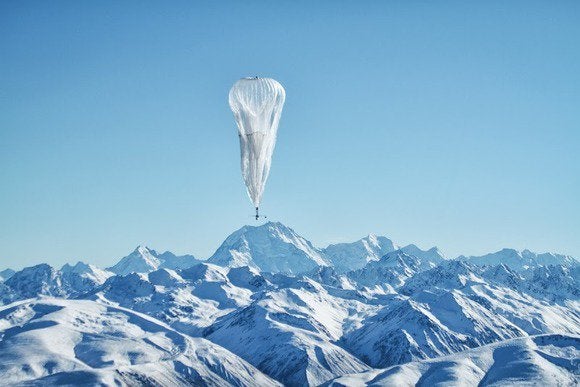 You know what’s awesome? The Internet. What’s not so great: The utter pain it is to find a fast, reliable Internet connection in so many parts of the world. With its latest moonshot, Google[x] is fighting that headache with creativity, attempting to make an awesome thing, well, even more awesome by spreading the Internet to the furthest reaches of the earth.
You know what’s awesome? The Internet. What’s not so great: The utter pain it is to find a fast, reliable Internet connection in so many parts of the world. With its latest moonshot, Google[x] is fighting that headache with creativity, attempting to make an awesome thing, well, even more awesome by spreading the Internet to the furthest reaches of the earth.
The delivery method? High-flying, Internet-spewing balloons.
Eighteen months in the works, the top-secret project was announced in New Zealand, where up to 50 volunteer households are already beginning to receive the Internet briefly on their home computers via translucent helium balloons that sail by on the wind 12 miles above Earth.
While the project is still in the very early testing stages, Google hopes eventually to launch thousands of the thin, polyethylene-film inflatables and bring the Internet to some of the more remote parts of the globe, narrowing the digital divide between the 2.2 billion people who are online and the 4.8 billion who aren’t.
If successful, the technology might allow countries to leapfrog the expense of installing fiber-optic cable, dramatically increasing Internet usage in places such as Africa and Southeast Asia.
“It’s a huge moonshot, a really big goal to go after,” said project leader Mike Cassidy. “The power of the Internet is probably one of the most transformative technologies of our time.”
The so-called Project Loon was developed in the clandestine Google X lab that also came up with a driverless car and Google’s Web-surfing eyeglasses.
Want to see the high-flying, potentially world-changing chicanery in action? The Project Loon’s Google+ page packs plenty of behind-the-scenes photos of the endeavor. Residents of the southern hemisphere may just get an up-close view of the balloons before long: Google is hoping to bring Project Loon to other countries on the same latitude as New Zealand.



